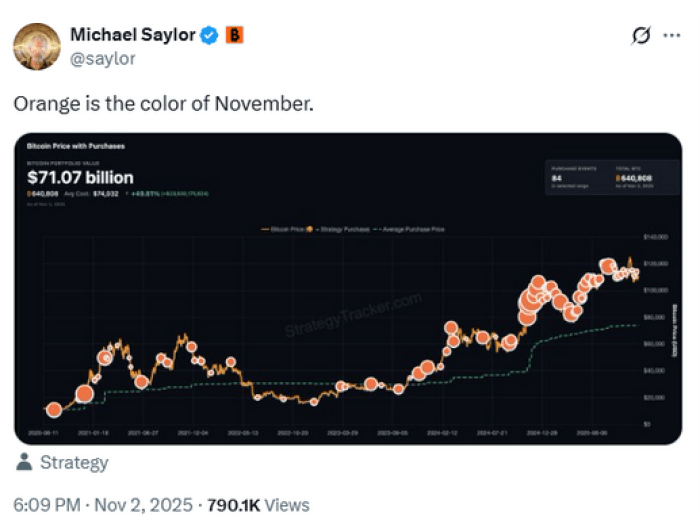
With the market constantly evolving and new coins and tokens popping up daily, staying on top of your investments is essential. Regularly reviewing and optimizing your crypto portfolio can help you make informed decisions about when to buy, sell, or hold your digital assets. It can also help you identify potential risks and opportunities before they become too big to ignore.
Portfolio optimization can also help you maximize returns. By diversifying your holdings, you can reduce your overall risk and increase your potential for long-term gains.&
Understanding Cryptocurrency Portfolio Optimization
Cryptocurrency investors should regularly optimize their portfolios to build a resilient, high-performing crypto portfolio that aligns with their financial goals and risk tolerance.
Optimizing your investment portfolio can reduce risk, maximize returns, and achieve your financial goals faster.
Portfolio optimization involves selecting a combination of investments that maximizes returns while minimizing risk. It's a balancing act between risk and reward, which requires careful analysis and strategic decision-making.
Portfolio optimization is systematically adjusting and fine-tuning your cryptocurrency investments to strike the ideal balance between risk and return. This involves assessing your current holdings, understanding your risk tolerance, and considering market trends and performance to create a well-diversified and robust portfolio.
Why Is Portfolio Optimization Important for Investors?
Portfolio optimization is crucial for cryptocurrency investors for several reasons:
- Maximize Returns: Optimizing your portfolio can potentially increase your overall investment returns by selecting financial instruments with the highest expected performance.
- Minimize Risk: A well-optimized portfolio reduces risk by diversifying investments across different assets and sectors, helping to protect against market fluctuations and individual asset volatility.
- Align With Investment Goals: Portfolio optimization ensures your investments are aligned with your long-term financial goals and risk tolerance, providing you with a roadmap for success.
- Adapt to Market Changes: The cryptocurrency market is constantly evolving. Regular portfolio optimization lets you stay ahead of market trends and adjust as needed, ensuring your portfolio remains relevant and profitable.
How to Achieve Cryptocurrency Portfolio Optimization?
Achieving portfolio optimization involves the following steps and considerations:
- Assess Your Risk Tolerance: Before optimizing your portfolio, it's essential to understand your risk tolerance. This will help you determine the appropriate balance between high-risk, high-reward assets and more stable, lower-risk investments.
- Diversify Your Investments: Spread your investments across various cryptocurrencies, sectors, and risk levels to minimize risk and maximize potential returns. Diversification helps insulate your portfolio from market volatility and reduces the impact of any single asset's poor performance.
- Analyze Market Trends and Performance: Stay informed about market trends, patterns, and performance metrics to make informed decisions about which assets to include in your portfolio. This may involve technical and fundamental analysis, as well as staying up-to-date on industry news and developments.
- Rebalance Regularly: Periodically review and adjust your portfolio to maintain the optimal balance between risk and reward. This may involve selling assets that have performed well and reinvesting the proceeds in underperforming or undervalued assets.
- Leverage Tools and Resources: Utilize available tools and resources, such as portfolio trackers and market analysis platforms, to help streamline the optimization process and provide valuable insights to inform your decision-making.
Factors to Consider in Crypto Portfolio Optimization
When creating and managing a successful cryptocurrency portfolio, investors must consider several factors to reduce risk and maximize returns. Whether you're a seasoned crypto investor or just starting, understanding the factors that impact portfolio optimization is essential for success in the dynamic cryptocurrency market.
Risk vs. Reward Tradeoff&
According to the Risk vs. Reward Tradeoff principle, higher-risk investments generally offer the potential for greater returns, while lower-risk investments offer lower returns.
As a result, investors must carefully weigh the risks and potential rewards of their investment decisions to create an optimal portfolio that aligns with their financial goals and risk tolerance.
In so doing, investors must assess the potential gains and losses associated with each cryptocurrency in their portfolio. This also involves examining the likelihood of price fluctuations and considering how these changes could impact the overall portfolio.
Let's consider a simplified example with two cryptocurrencies, Coin A and Coin B, to illustrate the Risk vs. Reward Tradeoff.
Coin A has a history of steady growth and relatively low price volatility, with a projected annual return of 8%.
Coin B, on the other hand, has experienced rapid growth but is known for its high price volatility, with a projected annual return of 20%.
An investor with a low-risk tolerance may allocate a more significant portion of their portfolio to Coin A, as it offers more stable growth and a lower potential for substantial losses. Although the expected return is lower, the investor is more comfortable with the reduced risk associated with Coin A.
Alternatively, an investor with a high-risk tolerance may allocate more of their portfolio to Coin B due to their willingness to accept the increased risk in exchange for the potential of higher returns.
Diversification
Spreading your investments across multiple cryptocurrencies can help mitigate risk and increase the potential for higher returns. Diversification is essential in the volatile crypto market, where individual coins can experience rapid price swings.
In the context of cryptocurrency, diversification means allocating your funds among various coins, sectors, and risk levels. By investing in a diverse range of cryptocurrencies, investors can minimize the impact of a single asset's poor performance and capitalize on the growth of multiple assets.
Let's consider a simplified example to illustrate the concept of diversification.
An investor has $10,000 to invest in cryptocurrencies. Instead of investing the entire amount in a single coin, they decide to diversify their portfolio across multiple assets as follows:
- 40% ($4,000) in Bitcoin (BTC) – a well-established, lower-risk asset.
- 30% ($3,000) in Ethereum (ETH) – another established asset with potential for growth due to its diverse use cases.
- 10% ($1,000) in a DeFi token – a higher-risk investment with the potential for high returns.
- 10% ($1,000) in an NFT project – another higher-risk investment with growth potential.
- 10% ($1,000) in Stablecoins – a low-risk, low-return asset for portfolio stability.
In this example, the investor has spread their investments across various cryptocurrencies with different risk levels and sectors, effectively diversifying their portfolio. If one of the higher-risk investments performs poorly, the impact on the overall portfolio will be limited due to the allocation of funds to lower-risk assets. Additionally, the investor can benefit from the growth of multiple assets, increasing the potential for higher overall returns.
Market Trends and Volatility
Market trends refer to the general direction in which the market or an asset's price moves, while volatility refers to the degree of price fluctuations over a given period. Staying informed about market trends and volatility is crucial for making informed investment decisions.&
Let's consider a simplified example to illustrate the importance of understanding market trends and volatility.
Imagine there are two cryptocurrencies, Coin X and Coin Y:
- Coin X has a history of high volatility, with daily price fluctuations of around 10%. Over the past six months, Coin X has been in an uptrend, with its price increasing by 50%.
- Coin Y has lower volatility, with daily price fluctuations of around 3%. Over the past six months, Coin Y has experienced a sideways trend, with its price remaining relatively stable.
The investor allocates a larger portion of their portfolio to Coin X to capitalize on the uptrend while being prepared for higher price fluctuations. Alternatively, they may invest in Coin Y for its stability, even though its price has remained relatively flat.
Time Horizon
Your investment goals and time horizon are crucial factors to consider when optimizing your crypto portfolio. The time horizon refers to the length of time you plan to hold your investments before cashing out or reallocating your assets.&
Long-term investors may be more willing to accept short-term volatility in exchange for potentially higher returns over time, while short-term investors may prioritize stability and capital preservation.&
Imagine two investors, John and Martin, each with $10,000 to invest in cryptocurrencies.
John has a long-term time horizon of 5 years and is willing to accept short-term volatility for potentially higher returns. He allocates his portfolio as follows:
- 50% ($5,000) in Bitcoin (BTC)
- 30% ($3,000) in Ethereum (ETH)
- 15% ($1,500) in a high-growth altcoin
- 5% ($500) in stablecoins
Martin has a short-term time horizon of 1 year and prioritizes capital preservation. He allocates his portfolio as follows:
- 30% ($3,000) in Bitcoin (BTC)
- 20% ($2,000) in Ethereum (ETH)
- 10% ($1,000) in a high-growth altcoin
- 40% ($4,000) in stablecoins
In this example, John's long-term time horizon allows him to accept the short-term volatility associated with a higher cryptocurrency allocation. In contrast, Martin's short-term time horizon makes him prioritize stability and allocate a larger portion of his portfolio to stablecoins.
Best Practices for Optimizing Your Crypto Portfolio
Let's look into some best practices for optimizing your crypto portfolio, leading to better outcomes in the dynamic and unpredictable cryptocurrency market.
Mean-Variance Optimization
Mean-Variance Optimization (MVO) is a mathematical framework for constructing an optimal portfolio by selecting the assets' proportions that maximize the expected return for a given level of risk or minimize the risk for a given level of expected return. This approach, initially developed by Harry Markowitz in the 1950s, is a cornerstone of Modern Portfolio Theory (MPT) and can be applied to various types of investments, including cryptocurrencies.
When applied to crypto portfolios, MVO helps investors find the optimal mix of cryptocurrencies that can potentially deliver the highest returns while keeping the overall portfolio risk within acceptable levels. This is achieved by considering both the expected returns and the risk associated with each cryptocurrency in the portfolio, as well as the correlations between them.
To perform Mean-Variance Optimization, the following steps are typically followed:
Estimate Expected Returns: Calculate the historical returns of each cryptocurrency in the portfolio and use them to estimate the future expected returns.
Calculate the Risk (Variance): Determine the risk associated with each cryptocurrency by measuring its historical price volatility, usually represented by the standard deviation of returns.
Compute the Covariance Matrix: Determine the correlation between each pair of cryptocurrencies in the portfolio to understand how their prices move relative to each other.
Optimize the Portfolio: Using the expected returns, variances, and covariance matrix, find the optimal portfolio allocation that either maximizes the expected return for a given level of risk or minimizes the risk for a given level of expected return.
Consider Constraints and Preferences: During the optimization process, investors can include constraints, such as minimum or maximum investment limits for each asset, and consider their personal preferences, risk tolerance, and investment goals.
Let's use an example to illustrate how MVO can be applied to a crypto portfolio.
Suppose you're investing in Bitcoin (BTC), Ethereum (ETH), and Litecoin (LTC). You have collected historical return data and calculated the expected returns, standard deviations, and correlations between these cryptocurrencies:
| Crypto | Expected Return | Standard Deviation |
| Bitcoin (BTC) | 15% | 20% |
| Ethereum (ETH) | 25% | 30% |
| Litecoin (LTC) | 20% | 25% |
Correlation Matrix
| BTC | ETH | LTC | |
| Bitcoin (BTC) | 1.0 | 0.6 | 0.5 |
| Ethereum (ETH) | 0.6 | 1.0 | 0.7 |
| Litecoin (LTC) | 0.5 | 0.7 | 1.0 |
Using this data, we can calculate the covariance matrix and perform Mean-Variance Optimization to find the optimal portfolio allocation that maximizes expected return for a given level of risk or minimizes risk for a given level of expected return.
Let's say your target expected return is 20%. Using Mean-Variance Optimization, we find the optimal portfolio allocation that achieves this target return while minimizing the risk:
- Bitcoin (BTC): 40%
- Ethereum (ETH): 35%
- Litecoin (LTC): 25%
This portfolio allocation has an expected return of 20% and the lowest risk (standard deviation) among all possible combinations that achieve this level of expected return.
Sharpe Ratio
The Sharpe Ratio is a valuable tool for crypto portfolio diversification, enabling investors to assess the risk-adjusted performance of various cryptocurrencies and create a well-balanced portfolio. By considering the returns and the risks associated with each cryptocurrency, investors can select the optimal mix of assets that maximizes their overall portfolio's risk-adjusted returns.
Let's use an example to illustrate how Sharpe Ratio can be used for crypto portfolio diversification.
Suppose you're considering Bitcoin (BTC), Ethereum (ETH), and a high-risk altcoin, AltX, for your portfolio. You've collected historical return data for each cryptocurrency and calculated the average return, standard deviation (risk), and Sharpe Ratio, assuming a risk-free rate of 2%.
| Crypto | Avg. Return | Standard Deviation | Sharpe Ratio |
| Bitcoin (BTC) | 15% | 20% | 0.65 |
| Ethereum (ETH) | 25% | 30% | 0.77 |
| Litecoin (LTC) | 40% | 50% | 0.76 |
In this example, Ethereum (ETH) has the highest Sharpe Ratio (0.77), indicating that it offers the best risk-adjusted return among the three cryptocurrencies. While AltX, despite having the highest average return (40%), has a lower ratio (0.76) due to its higher risk (50% standard deviation).
To create a well-diversified portfolio using this Ratio, you might allocate your funds as follows:
- 40% in Bitcoin (BTC) - A lower-risk, established cryptocurrency with moderate returns.
- 50% in Ethereum (ETH) - A higher-return cryptocurrency with a higher risk-adjusted return (highest Sharpe Ratio).
- 10% in Altcoin X - A high-risk, high-return cryptocurrency to capitalize on potential growth while limiting exposure to its higher risk.
Portfolio Diversification
As discussed, diversification is a key principle in cryptocurrency investing. It involves spreading your investments across multiple cryptocurrencies to reduce risk and increase the potential for higher returns.
Setting Realistic Investment Goals
Setting clear and achievable investment goals will help guide your portfolio optimization efforts. Consider your risk tolerance, time horizon, and financial objectives when setting your goals.
Portfolio Rebalancing
As market conditions change and your investments grow, you must periodically review and adjust your investment portfolios to maintain the optimal balance between risk and reward.
Using a Portfolio Tracker
A secure and efficient crypto portfolio tracker can help you implement the best practices more effectively by providing real-time portfolio monitoring, automatic coin tracking, and comprehensive portfolio analysis.
Benefits of Using a Crypto Portfolio Tracker
A crypto portfolio tracker is an invaluable tool for investors looking to overcome the challenges of managing a portfolio. Some benefits of using a tracker are as follows:
Real-time portfolio monitoring: A portfolio tracker keeps you informed about your investments' performance, providing up-to-date daily data and analytics. This allows you to make timely adjustments as market conditions change.
Automatic coin tracking: A portfolio tracker automatically keeps track of your cryptocurrency holdings, saving you time and effort. This ensures you always have an accurate and complete picture of your investments.
Comprehensive portfolio analysis: With a portfolio tracker, you can access detailed analytics that helps you understand your portfolio's performance, risk profile, and diversification. This valuable information can guide your optimization efforts and help you make more informed decisions.
Alerts and notifications: Portfolio trackers can provide customizable alerts and notifications to keep you informed of significant price movements or other events that may affect your investments. This can help you react quickly to market changes and protect your investments.
CoinStats Portfolio Tracker: A Comprehensive Solution for Crypto Investors
CoinStats Crypto Portfolio Tracker is a comprehensive crypto portfolio tracker with over 1.2 million users empowering you to manage your entire profitable portfolio - your crypto, DeFi, and NFTs directly from a single dashboard. With real-time updates and detailed analytics, you can quickly and accurately assess the performance of your investments, identify trends, and make informed decisions.
CoinStats Portfolio Tracker helps you track your entire crypto portfolio across multiple wallets, exchanges, and DeFi protocols for free in real-time with a few clicks from a single platform.
Real-time portfolio monitoring, automatic coin tracking, comprehensive portfolio analysis, and customizable alerts and notifications are just a few of the many features available on the CoinStats portfolio tracker. This all-in-one platform provides a secure and seamless user experience, enabling you to efficiently manage your investments and make informed decisions based on up-to-date data and analytics.
With the CoinStats portfolio tracker, you can easily monitor the performance of your entire portfolio and individual assets. The platform automatically tracks your cryptocurrency holdings, saving you time and effort by providing an accurate and complete picture of your investments.&
Additionally, the comprehensive portfolio analysis feature offers detailed insights into your portfolio's performance, risk profile, and diversification, helping you fine-tune your strategy and make data-driven decisions.
Conclusion
Regularly reviewing and optimizing your crypto portfolio is crucial for maximizing returns and minimizing risk in the ever-changing cryptocurrency market.&
You can create a well-balanced portfolio by implementing best practices and understanding the challenges of managing a crypto portfolio, such as risk, reward, diversification, market trends, etc.&
A crypto portfolio tracker is a valuable tool that can help you stay on top of your investments, making it easier to achieve your financial goals. Understanding the significance of portfolio optimization and leveraging a portfolio tracker to enhance your investment strategy will help you confidently navigate the dynamic cryptocurrency landscape.

You can get bonuses upto $100 FREE BONUS when you:
💰 Install these recommended apps:
💲 SocialGood - 100% Crypto Back on Everyday Shopping
💲 xPortal - The DeFi For The Next Billion
💲 CryptoTab Browser - Lightweight, fast, and ready to mine!
💰 Register on these recommended exchanges:
🟡 Binance🟡 Bitfinex🟡 Bitmart🟡 Bittrex🟡 Bitget
🟡 CoinEx🟡 Crypto.com🟡 Gate.io🟡 Huobi🟡 Kucoin.



















Comments